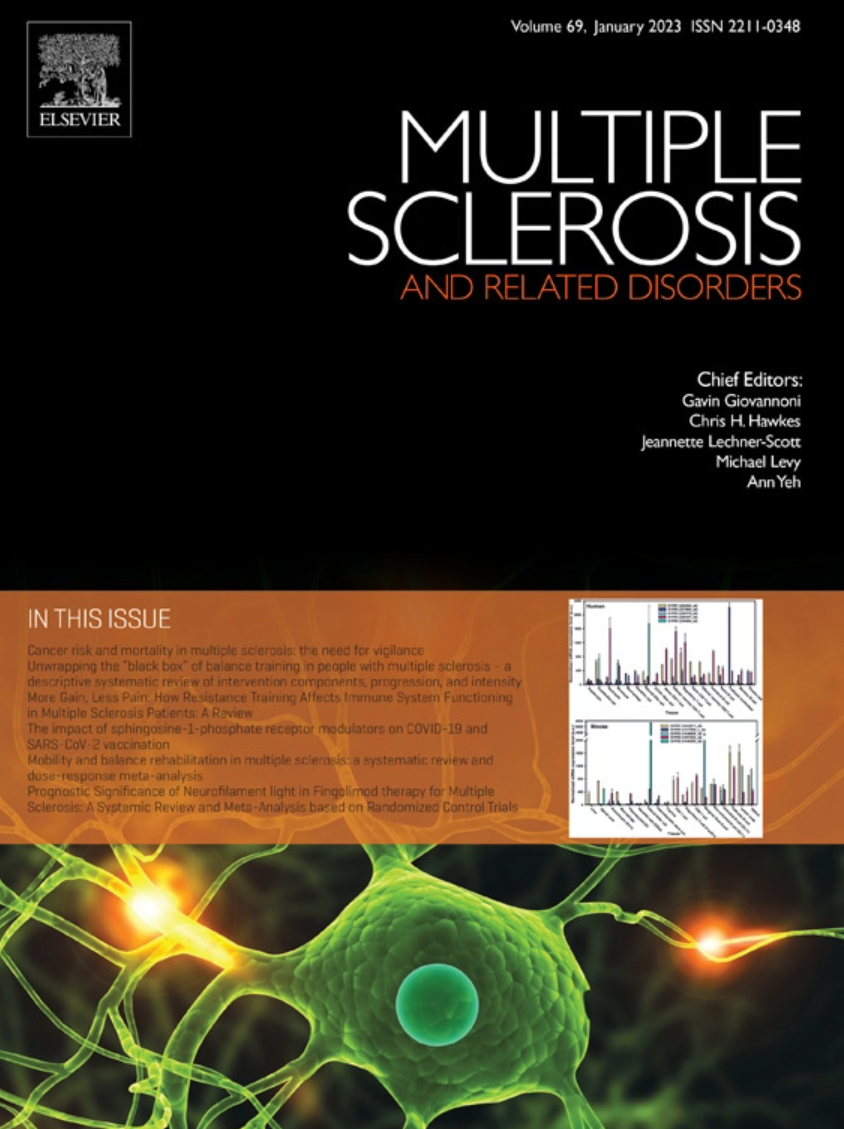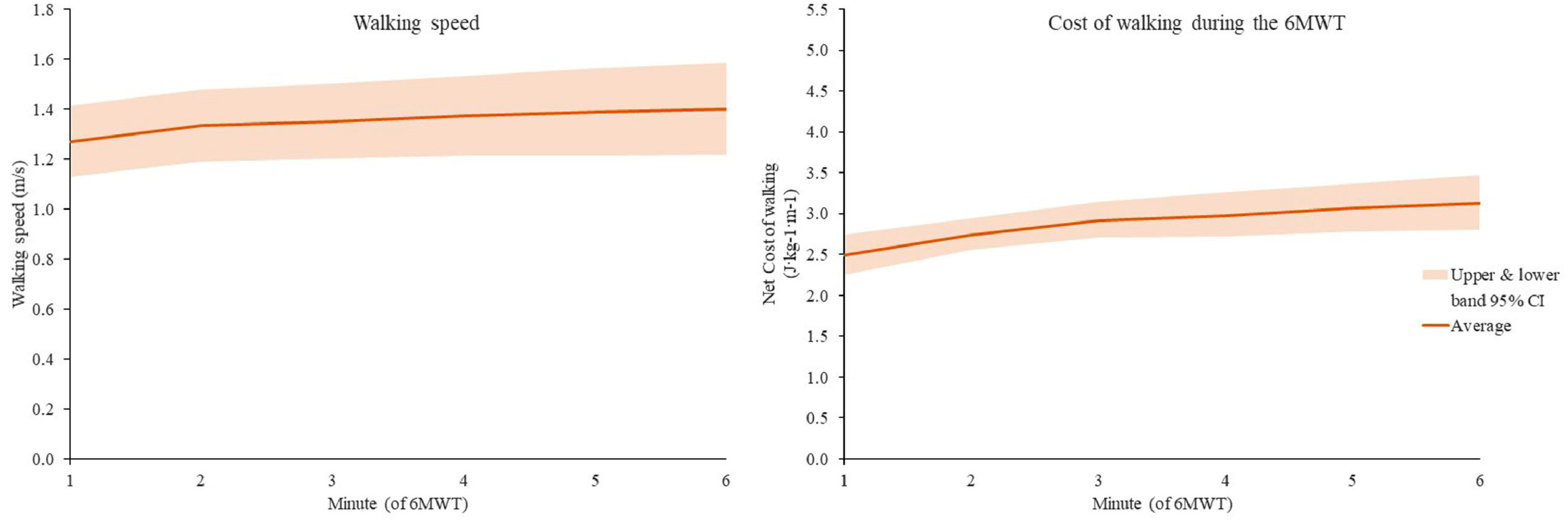Multiple Sclerosis (MS) is a debilit ating autoimmune disease that affects the central nervous system, resulting in physical impairments due to demyelination and axonal damage. One of the most crucial physical activities for persons with MS (pwMS) is walking, which is impacted from the early stages of the disease. A decline in walking ability has been linked to decreased daily physical activity and self-reported fatigue, and over the long-term, reduced physical fitness has been associated with an increased risk of cardiovascular problems and depression. Hence, preserving walking ability is a critical objective in rehabilitation for pwMS.
ating autoimmune disease that affects the central nervous system, resulting in physical impairments due to demyelination and axonal damage. One of the most crucial physical activities for persons with MS (pwMS) is walking, which is impacted from the early stages of the disease. A decline in walking ability has been linked to decreased daily physical activity and self-reported fatigue, and over the long-term, reduced physical fitness has been associated with an increased risk of cardiovascular problems and depression. Hence, preserving walking ability is a critical objective in rehabilitation for pwMS.
Clinically, walking ability is typically evaluated through the 6 Minute Walking Test (6MWT). Slower walking speeds during the 6MWT have been identified as a hallmark of impaired walking ability in pwMS in numerous studies. Furthermore, slower walking speeds have been linked to elevated levels of both psychological and physical fatigue as measured by the Modified Fatigue Impact Scale (MFIS).
Physical exertion refers to a decline in performance during a specific task and has been documented in some studies as a drop of ≥10-15% in walking speed between the first and last minute of the 6MWT in around half of pwMS with moderate-to-severe disability, known as walking fatigability.
It is currently unknown if changes in walking speed during the 6MWT are accompanied by changes in metabolic energy demand. A more comprehensive evaluation of physical exertion could be obtained by simultaneously assessing changes in walking speed and metabolic energy demand during the 6MWT.
The metabolic energy demand during walking is typically expressed as the Cost of walking (Cw), which is a measure of the energy consumed per distance walked and is expressed in Joules per kilogram of body weight per meter (J·kg−1·m−1). PwMS walk at a greater Cw compared to healthy individuals, but at a similar optimal speed, as described by the U-shaped relationship between walking speed and the Cw. Since walking is more energetically demanding in pwMS, an increase in Cw could be accompanied by changes in gait parameters. Evaluating these changes simultaneously will shed light on both physical and perceived fatigue.
Compared to healthy individuals, pwMS are known to walk with a lower cadence, shorter step length, and wider step width. Additionally, the variability of these gait characteristics is also increased in pwMS. Since these parameters are predictors of the Cw, an increased metabolic effort could be linked to alterations in these parameters. Muscle fatigue during walking has also been shown to worsen in pwMS, regardless of walking speed, highlighting the importance of measuring muscle fatigue in pwMS. Altered muscle activation strategies and muscle fatigue can contribute to an increased Cw as muscle activation is the primary source of metabolic energy demand during walking.
Goal of the study
The goal of this study was to investigate the changes in both the RPE (rating of perceived exertion) and the Cw (cost of walking) of individuals with MS during the 6MWT (6 Minute Walking Test). The researchers also aimed to examine the associated changes in the mean and variability of gait parameters and muscle activation as an indicator of muscle fatigue.
Methods
The 6MWT was conducted on an instrumented treadmill while continuously collecting three-dimensional motion capture and gas exchange data. Participants’ Resting Metabolic Rate (RMR) was measured through indirect calorimetry by recording the oxygen consumed (O2) and the carbon dioxide produced (CO2) using an Omnical device (Maastricht Instruments, Maastricht, The Netherlands).
Before and after the 6MWT, participants were asked to rate their perceived exertion using the 6-20 Borg scale. The cost of walking was calculated in Joules/kg/m. Muscle fatigue was evaluated by examining the increases in the Root Mean Square (RMdS) and decreases in the Median Frequency (MF) of the recorded electromyography (EMG) signals.
The Wilcoxon-Signed Rank test was used to compare the RPE scores before and after the 6MWT. Linear mixed models, with walking speed controlled for, were used to assess changes in the Cw, mean and variability of gait parameters, and RMdS and MF of muscle activation.
Results
In this study, 28 individuals with Multiple Sclerosis (23 females and 5 males, with an average age of 46 years ± 10 standard deviation, height of 1.69 meters ± 0.08, weight of 76 kilograms ± 18, and Expanded Disability Status Scale score of 2.7 ± 1.3) were included. Results showed that the participants reported an increased rating of perceived exertion from 8 to 12 on the 6-20 Borg scale during the 6-minute walking test, but there were no changes found in the cost of walking (Cw). The only change observed was an increase in walking speed, but it was not accompanied by an increase in Cw. Additionally, the study found an increase in the Root Median Square (RMdS) of the gastrocnemius and tibialis anterior muscles and a decrease in the Median Frequency (MF) of the soleus muscle, which might indicate muscle fatigue, but the results were inconclusive. These findings indicate that the 6MWT reflects the walking challenges faced by individuals with MS in their daily lives, but it did not show the expected changes in gait parameters in this sample.
Fig 1. Walking Speed per Minute during the Six Minute Walking Test (6MWT) is on the left side, while Cost of Walking (Cw) is on the right. The shaded region represents the 95% Confidence Interval (CI). It should be noted that only the steady-state net Cw of minutes 3, 4, 5, and 6 have been considered in the analysis.
Related products
Omnical Sport
The Omnical is the most versatile and accurate indirect calorimeter for research purposes on the market. Comprised of state-of-the-art technology using the highest-class precision measurement instruments, it enables customers to perform studies in various research fields. The system is designed to measure energy metabolism ranging from resting metabolism rate (RMR) to sports performance testing (e.g. VO2max tests) with high accuracy.
How can we help you with your research?
Maastricht Instruments creates equipment in the field for indirect calorimetry measurements. We provide support for studies, research and measurements alongside our indirect calorimetry products. Consult us about our indirect calorimetry metabolic cart, whole room calorimeter systems or accelerometry add-ons. Please contact us or find more information on our information pages.
Reference
Kyra Theunissen, Guy Plasqui, Annelies Boonen, Annick Timmermans, Pieter Meyns, Peter Feys, Kenneth Meijer, The increased perceived exertion during the six minute walking test is not accompanied by changes in cost of walking, gait characteristics or muscle fatigue in persons with multiple sclerosis, Multiple Sclerosis and Related Disorders, Volume 70, 2023, 104479, ISSN 2211-0348, https://doi.org/10.1016/j.msard.2022.104479.
Related articles: https://www.indirectcalorimetry.net/self-paced-and-fixed-speed-treadmill-walking-yield-similar-energetics-and-biomechanics-across-different-speeds/

